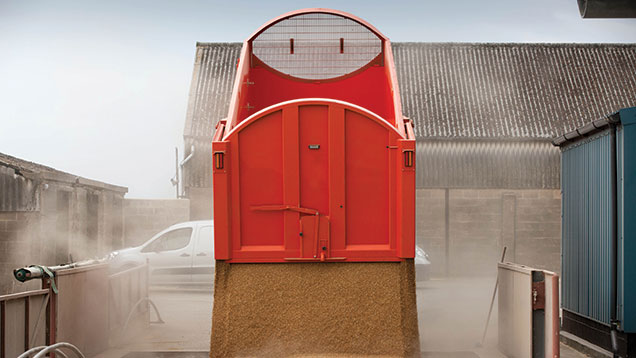High stocks and currency keep grain price down
 © Tim Scrivener
© Tim Scrivener Heavy stocks and a decent crop outlook continue to pressure grain prices.
In a buyer’s market, ex-farm values weakened slightly in the first half of this week, to average £112.80/t.
There is just £6/t between the London July feed wheat futures contract and the November price, indicating for the time being a smooth handover between the 2014 and 2015 crops.
See also: Grain-cooling system offers lower costs and outside venting
Although the HGCA planting survey showed a drop of up to 7% in the planted area of winter wheat for harvest 2015, any market impact from this statistic was outweighed by the potential for spring sowings, the likely carryover of old crop and sterling reaching a seven-year high against the euro this week.
Sterling has appreciated 9% against the euro since the start of this year, accounting for about £12/t of the loss in UK grain values, pointed out consultant Bidwells.
The strength of the US dollar is weighing on US grain markets and making them less export competitive, in turn benefiting euro-based sellers and those in the UK, although to a lesser extent.
The low value of the euro has however helped EU wheat and barley exports to reach almost record levels. By 25 February, 22.2m tonnes of wheat export licences (including flour and durum) had been issued, compared with 21.5m tonnes to the same time last year.
EU barley totalled 6.1m tonnes by 25 February, up from 4.9m tonnes at the same time last season.
Barley prices are trailing wheat by an average of about £3.50/t and barley has taken a slightly larger share of the grain used for animal feed over the past year, at 23.3%.
“We’re not able to shift anything on old crop and farmers don’t want to know about new crop.”
David Sheppard, Gleadell managing director
With high stocks depressing prices, offers of old crop from farm are slow and new crop is slower. The UK looks like carrying more than 3m tonnes of wheat from the 2014 crop into next season.
“We’re not able to shift anything on old crop and farmers don’t want to know about new crop,” said Gleadell managing director David Sheppard. “Everyone is hunting for a weather story that doesn’t exist.”
New crop feed wheat was worth about £120/t ex-farm for November, a £6/t discount to the futures market, on Wednesday (11 March).
Mr Sheppard estimates that about 10% of new crop is sold and priced, while about 25% is committed but yet to be priced, for example in pools. These levels are well down on last year.
Premiums for full-spec breadmaking wheats are at their highest level for six years, accounting for about 24% of the total value. Long-term milling wheat use in the UK was slowly trending upwards, said HGCA but premiums were statistically unlikely to be as high next season. However new varieties may increase opportunities for UK growers, said the levy board.
